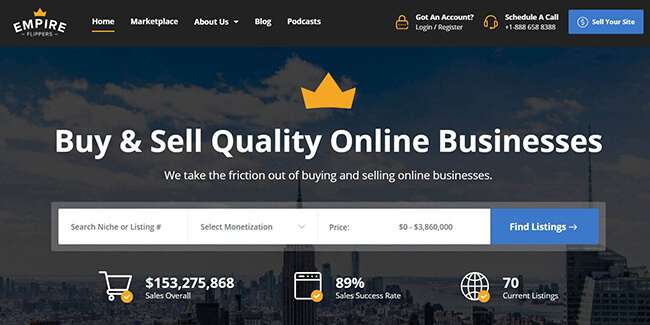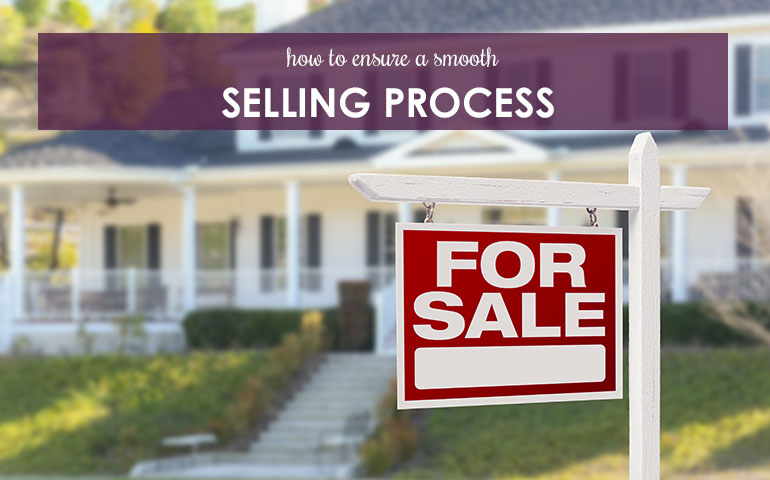How to Find the Best Platform for Your Needs
Online marketplaces have revolutionized the way people buy and sell goods, offering a convenient and accessible platform for individuals to connect with a global audience. With numerous websites and platforms available, it can be overwhelming to choose the right one for your needs. A website where people sell things can be a lucrative venture, but it’s essential to select a platform that aligns with your goals and target audience.
When searching for the ideal online marketplace, consider factors such as fees, product categories, and user demographics. Different platforms cater to various demographics, and understanding your target audience’s preferences and shopping habits can help you choose the right platform. For instance, if you’re looking to sell handmade products, a platform like Etsy might be the perfect fit. On the other hand, if you’re interested in selling electronics or gadgets, a website like eBay or Amazon might be more suitable.
Understanding the fees associated with each platform is also crucial, as it can significantly impact your profit margins. Some platforms charge a flat fee per listing, while others take a commission on each sale. Additionally, consider the level of competition on each platform and the tools and resources available to help you succeed.
Ultimately, finding the right online marketplace requires research and experimentation. Take the time to explore different platforms, read reviews, and understand the fees and terms associated with each website. By doing so, you can increase your chances of success and find a platform that meets your needs and helps you achieve your goals.
Popular Websites for Buying and Selling
When it comes to buying and selling goods online, there are several popular websites that come to mind. These platforms have established themselves as leaders in the e-commerce industry, offering a wide range of products and services to consumers. A website where people sell things can be a great way to connect with potential customers, but it’s essential to choose a platform that aligns with your needs and target audience.
eBay is one of the most well-known online marketplaces, with over 183 million active users worldwide. The platform allows individuals to buy and sell new and used goods, including electronics, fashion items, and collectibles. eBay’s fees range from 8% to 12.5% of the sale price, depending on the category and type of listing.
Amazon is another popular online marketplace, with over 300 million active users worldwide. The platform allows individuals to buy and sell new and used goods, including books, electronics, and household items. Amazon’s fees range from 8% to 15% of the sale price, depending on the category and type of listing.
Etsy is a niche online marketplace that specializes in handmade and vintage items. The platform allows individuals to buy and sell unique goods, including jewelry, clothing, and home decor. Etsy’s fees range from 3.5% to 5% of the sale price, depending on the type of listing.
These popular online marketplaces offer a range of features and services to help individuals buy and sell goods online. From payment processing to shipping and customer service, these platforms provide a comprehensive solution for e-commerce needs. By understanding the fees, features, and user demographics of each platform, individuals can make informed decisions about which website to use for their buying and selling needs.
The Rise of Niche Marketplaces
In recent years, niche marketplaces have emerged as a popular alternative to traditional online marketplaces. These platforms specialize in specific product categories, such as gently used clothing, vintage items, or handmade goods. A website where people sell things can be a great way to connect with potential customers, but niche marketplaces offer a more targeted approach.
Poshmark, for example, is a niche marketplace that specializes in gently used clothing and accessories. The platform allows users to buy and sell high-end fashion items, with a focus on community and social interaction. Poshmark’s fees range from 15% to 20% of the sale price, depending on the type of listing.
Ruby Lane is another niche marketplace that specializes in vintage and antique items. The platform allows users to buy and sell unique goods, including jewelry, furniture, and collectibles. Ruby Lane’s fees range from 6.7% to 9.5% of the sale price, depending on the type of listing.
The benefits of niche marketplaces are numerous. By specializing in a specific product category, these platforms can attract a dedicated user base that is passionate about the products being sold. Additionally, niche marketplaces often have lower fees than traditional online marketplaces, making them a more attractive option for sellers.
Niche marketplaces also offer a more personalized shopping experience, with a focus on community and social interaction. Many niche marketplaces allow users to connect with each other, share photos and reviews, and participate in online forums and discussions. This creates a sense of belonging and loyalty among users, which can lead to increased sales and customer retention.
Overall, niche marketplaces offer a unique and targeted approach to buying and selling online. By specializing in specific product categories, these platforms can attract a dedicated user base and provide a more personalized shopping experience. Whether you’re looking to buy or sell, niche marketplaces are definitely worth considering.
How to Get Started as a Seller
Getting started as a seller on an online marketplace can be an exciting venture, but it requires some preparation and planning. A website where people sell things can be a great way to connect with potential customers, but it’s essential to create a professional profile and showcase your products in the best possible light.
First, choose a username and profile picture that accurately represent your brand and products. Make sure your profile is complete and includes all relevant information, such as your business name, address, and contact details. This will help build trust with potential customers and make it easier for them to find and purchase from you.
Next, take high-quality product photos that showcase your items from different angles. Use good lighting, and consider using a tripod or photo studio to ensure your photos are clear and well-lit. This will help your products stand out and make them more appealing to potential customers.
When writing product descriptions, be sure to include all relevant details, such as the product’s features, benefits, and specifications. Use keywords that accurately describe your product and make it easier for customers to find. Keep your descriptions concise and easy to read, and use bullet points or short paragraphs to make them more scannable.
Finally, make sure you have a clear and concise pricing strategy in place. Research your competition and price your products competitively, taking into account the costs of shipping and any other fees associated with selling on the platform. Consider offering discounts or promotions to attract new customers and build loyalty with existing ones.
By following these tips, you can create a professional profile and showcase your products in the best possible light. This will help you attract more customers and increase your sales on the online marketplace. Remember to stay up-to-date with the platform’s policies and guidelines, and be prepared to adapt to any changes or updates that may affect your business.
Ensuring a Smooth Transaction Process
A smooth transaction process is crucial for building trust and ensuring a positive experience for both buyers and sellers on online marketplaces. A website where people sell things can be a great way to connect with potential customers, but it’s essential to have a seamless transaction process in place to avoid any issues or disputes.
One of the most important aspects of a smooth transaction process is payment. Many online marketplaces offer built-in payment solutions, such as PayPal or Stripe, which can help to simplify the payment process and reduce the risk of disputes. These payment solutions often offer additional features, such as buyer protection and seller verification, which can help to build trust and ensure a smooth transaction process.
Shipping is another critical aspect of a smooth transaction process. Online marketplaces can provide shipping labels and tracking information, making it easier for sellers to manage their shipments and for buyers to track their packages. Some platforms also offer shipping insurance, which can help to protect against lost or damaged packages.
Customer service is also essential for ensuring a smooth transaction process. Online marketplaces can provide customer support through various channels, such as email, phone, or live chat. This can help to resolve any issues or disputes that may arise during the transaction process and ensure a positive experience for both buyers and sellers.
Examples of platforms that offer built-in payment and shipping solutions include eBay, Amazon, and Etsy. These platforms have streamlined the transaction process, making it easier for buyers and sellers to connect and complete transactions. By providing a smooth transaction process, online marketplaces can help to build trust and ensure a positive experience for all users.
Ultimately, a smooth transaction process is essential for the success of online marketplaces. By providing built-in payment and shipping solutions, online marketplaces can help to simplify the transaction process and reduce the risk of disputes. This can help to build trust and ensure a positive experience for both buyers and sellers, making online marketplaces a great way to connect with potential customers and grow your business.
Building a Community on Online Marketplaces
Building a community on online marketplaces is crucial for creating a positive and engaging experience for both buyers and sellers. A website where people sell things can be a great way to connect with potential customers, but it’s essential to build a community around your brand to increase loyalty and retention.
One way to build a community on online marketplaces is to engage with customers through reviews and feedback. Responding to reviews and feedback in a timely and professional manner can help to build trust and show that you value your customers’ opinions. Additionally, using social media to promote your brand and engage with customers can help to build a community around your brand.
Another way to build a community on online marketplaces is to create a positive reputation. This can be done by providing excellent customer service, offering high-quality products, and being transparent about your business practices. By creating a positive reputation, you can attract more customers and increase loyalty and retention.
Online marketplaces can also provide tools and features to help build a community around your brand. For example, some platforms offer features such as discussion forums, groups, and messaging systems that can help to facilitate communication and engagement between buyers and sellers.
Examples of platforms that offer community-building features include eBay, Amazon, and Etsy. These platforms have created a sense of community around their brands by providing tools and features that facilitate engagement and communication between buyers and sellers.
Ultimately, building a community on online marketplaces is essential for creating a positive and engaging experience for both buyers and sellers. By engaging with customers, creating a positive reputation, and using community-building features, you can increase loyalty and retention and build a successful online business.
Staying Safe While Buying and Selling Online
When using a website where people sell things, safety should always be a top priority. With the rise of online marketplaces, it’s easier than ever to buy and sell goods, but it also increases the risk of scams, fraud, and other malicious activities. To ensure a secure and successful transaction, it’s essential to take necessary precautions and be aware of potential risks.
One of the most critical aspects of online safety is protecting personal and financial information. When creating an account on a website where people sell things, make sure to use a strong and unique password, and avoid using the same password for multiple accounts. Additionally, be cautious when sharing personal information, such as your address or phone number, and only provide it to trusted sellers or buyers.
Another crucial aspect of online safety is using secure payment methods. Look for websites that offer built-in payment solutions, such as PayPal or credit card processing, which provide an added layer of security and protection. Avoid using wire transfer or other unsecured payment methods, as they can put you at risk of losing money.
When buying from a website where people sell things, it’s essential to research the seller and read reviews from other customers. Look for sellers with high ratings and a large number of positive reviews, and be wary of sellers with low ratings or few reviews. Additionally, be cautious of sellers who ask for payment outside of the website’s payment system or who request personal or financial information.
Scams are another common risk when using online marketplaces. Be aware of common scams, such as phishing emails or fake listings, and never click on suspicious links or download attachments from unknown senders. If you suspect a scam, report it to the website’s customer support immediately.
Finally, it’s essential to stay informed and up-to-date on online safety best practices. Regularly review the website’s terms and conditions, and stay aware of any changes or updates to their safety policies. By taking these precautions and being aware of potential risks, you can ensure a safe and successful buying and selling experience on a website where people sell things.
Conclusion: Finding the Right Online Marketplace for You
In conclusion, finding the right online marketplace for buying and selling goods is crucial for a successful and enjoyable experience. With so many options available, it’s essential to consider factors such as fees, target audience, and product categories when choosing a platform. By understanding the features, benefits, and user demographics of popular websites like eBay, Amazon, and Etsy, as well as niche marketplaces like Poshmark and Ruby Lane, individuals can make informed decisions about where to buy and sell.
Additionally, by following tips and advice on how to get started as a seller, ensure a smooth transaction process, build a community, and stay safe while buying and selling online, individuals can maximize their chances of success on a website where people sell things. Whether you’re a seasoned seller or just starting out, it’s essential to stay informed and adapt to the ever-changing landscape of online marketplaces.
Ultimately, the key to finding the right online marketplace is to explore different platforms, understand their unique features and benefits, and find the one that best aligns with your needs and goals. By doing so, you can unlock the full potential of online marketplaces and achieve success in buying and selling goods online. With the rise of e-commerce and the increasing popularity of online marketplaces, there’s never been a better time to get started and find the right website where people sell things for you.






